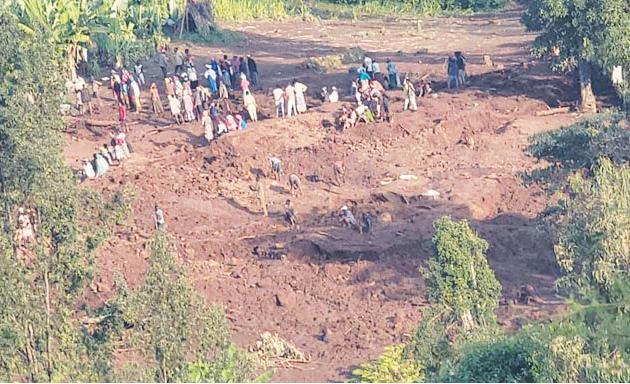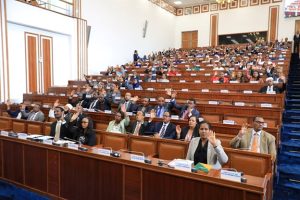
Albeit Ethiopia is prone to drought, flashfloods and some harsh weather impacts, it is less likely vulnerable a landslide that causes massive damage. This week, the country has experienced one of the severe landslides in Gofa Zone of South Ethiopia state.
A mudslide of saturated silt and water was the reason behind the incident that initially occurred last Sunday and continued to happen to the next consecutive two days thereby claiming many lives and displaced several citizens. Raising alarms on additional incident might happen in some parts of the country, scholars in the field suggested that implementing a strategic and consistent environment protection is vital to prevent the incident from happening again.
Most of landslides in Ethiopia are commonly triggered by heavy seasonal rainfall and earthquake occurrences causing significant loss to human and animal lives, damaging infrastructures especially in highland areas.
Addis Ababa University Soil Science Expert Prof. Mohammed Hassan believed that the landslide occurred in Gofa Zone of South Ethiopia state is one of the landslide accidents that caused more life loss. “However, there was a possibility to manage and minimize the damage if we were prepared well.”
He told The Ethiopian Press Agency (EPA) that there was a threat as the accident was happened over the previous years. The mudslide in this area is not happening for the first time although the magnitude of the incident varies. There was a threat that a landslide would occur around Lake Abaya in the zone.
High volume rain is one of causes that aggravates landslide in the area. There was a possibility to minimize the shock if soil and river basin development activities were performed effectively.
A sediment and water have been deposited in the area which turned out to be a mudslide driven by heavy rain so that it caused a huge damage, he said, while suggesting that facilitating soil and river basin development efforts would reduce such kind of risks in this area.
Mohammed stressed that similar disaster might have happened in the slippery Entoto area of Addis Ababa or the vast deposit of loose soil, but doesn’t happen yet due to the presence of enough woods there.
Therefore, the proper implementation of environment protection in slippery areas is crucial to mitigate climate change impacts including landslide. He mentioned that mudslide was repeatedly happening in other parts of the country mainly in Dessie and its surroundings. It needs planting trees, strengthening soil and water protection activities and others in slippery areas to over come the incident, he underscored.
For his part, Addis Ababa University Geo-physics Space Science and Astronomy Institute Head, Prof. Atalay Ayele stated that the repeated occurrence of landslide in southern Ethiopia during summer season is the result of absence of soil and water protection works.
The depletion of forests and underground water, repeated agricultural activity and others would lead to land slide. He agreed with Mohamed’s point of view in need of strengthening soil and water preservation works to avert the possible hazards in risky areas in the future.
Moreover, the effort demands prioritizing awareness creation to strengthen forest development in areas that are prone to landslide. Specifically, mitigating the landslide risk requires adequate drainage of slopes in order to reduce water infiltration, he pointed out.
Moreover, appropriate site selection for buildings, transferring risky settlements, accurate geological control of works, and education campaigns are also among the solutions strongly recommended by the scholars.
BY TSEGAYE TILAHUN
THE ETHIOPIAN HERALD SATURDAY 27 JULY 2024





